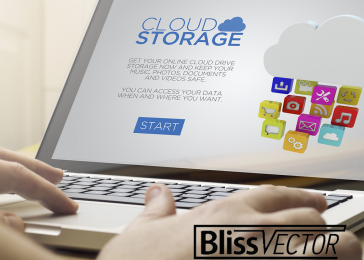Top 20 Cybersecurity Best Practices
In an era where digital threats lurk around every virtual corner, safeguarding your digital presence is not just a good practice; it’s a necessity. Whether you’re a seasoned professional or a fresh recruit in the workforce, adopting robust cybersecurity habits is crucial to protect both personal and organizational information. Here are the top 20 cybersecurity best practices that every standard user in the workplace should follow:
- Create Strong, Unique Passwords:
Use complex passwords that combine uppercase and lowercase letters, numbers, and special characters. Avoid easily guessable information like birthdays or names.
- Implement Two-Factor Authentication (2FA):
Add an extra layer of security by enabling 2FA wherever possible. This ensures that even if your password is compromised, access remains restricted without the second authentication step.
- Regularly Update Software:
Keep all your software, including operating systems, browsers, and security software, up to date. Regular updates often include patches for known vulnerabilities.
- Use a Secure Wi-Fi Connection:
When working remotely, use a password-protected Wi-Fi network. Avoid public Wi-Fi for sensitive tasks, or use a virtual private network (VPN) for added security.
- Beware of Phishing Attacks:
Be cautious of unsolicited emails, messages, or links. Cybercriminals often use phishing tactics to trick individuals into revealing sensitive information.
- Educate Yourself on Social Engineering:
Familiarize yourself with common social engineering tactics, such as pretexting and baiting. Be skeptical of unexpected requests for information or money.
- Encrypt Sensitive Data:
Use encryption tools to secure sensitive data. This adds an extra layer of protection, ensuring that even if unauthorized access occurs, the data remains unreadable.
- Regularly Back Up Data:
Schedule regular backups of important files. In case of a ransomware attack or data loss, you can restore your information without paying a ransom.
- Secure Physical Devices:
Ensure that physical devices such as laptops and smartphones are protected with passwords or biometric authentication. Keep them in a secure location when not in use.
- Implement Mobile Device Security:
Enable device encryption and install security apps on your mobile devices. Avoid connecting to unsecured networks and be cautious when downloading apps.
- Limit Access Privileges:
Only grant access to systems and data that are necessary for your job. Regularly review and update access permissions, revoking unnecessary privileges.
- Secure Your Email:
Use a secure email provider and be cautious about clicking on links or downloading attachments, even if the email seems legitimate. Enable spam filters.
- Secure Video Conferencing:
When participating in virtual meetings, use secure platforms, set passwords for meetings, and be mindful of screen sharing to avoid unintentional exposure of sensitive information.
- Implement Endpoint Security:
Install and regularly update endpoint security solutions. This safeguards individual devices from malicious software and other cyber threats.
- Regular Security Training:
Stay informed about the latest cybersecurity threats and best practices. Participate in regular security training sessions to enhance your awareness and knowledge.
- Monitor Financial Transactions:
Keep a close eye on your financial accounts for any suspicious activity. Report any discrepancies immediately to your financial institution.
- Secure File Sharing:
Use secure file-sharing platforms with encryption features. Avoid using personal email for work-related file sharing to maintain a secure digital environment.
- Create a Cybersecurity Policy:
Encourage the establishment of a workplace cybersecurity policy. This can provide guidelines for employees, fostering a culture of security awareness.
- Report Security Incidents Promptly:
If you notice anything unusual or suspect a security incident, report it to your IT department immediately. Quick action can mitigate potential damage.
- Regular Security Audits:
Conduct regular security audits of your digital practices. This can identify vulnerabilities and areas for improvement in your cybersecurity strategy.
By adopting these cybersecurity best practices, you not only protect yourself but also contribute to the overall security posture of your workplace. Cyber threats are continually evolving, and staying vigilant is key to safeguarding sensitive information. Remember, in the digital realm, your actions play a crucial role in fortifying the collective defense against cyber adversaries. Stay informed, stay secure, and let’s build a digital world that’s resilient against cyber threats.
Ask us how we can help. Book a free 30-minute call to see how we can help you and your workplace become a Workplace Warrior against Cyber Threats. http://go.scheduleyou.in/NMkcRxX




